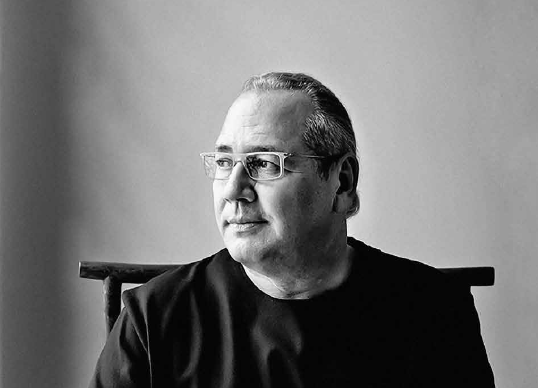
Antonio Ochoa-Piccardo
"Antonio Ochoa-Piccardo", from Venezuela. An investor and legal representative of Andong Hongfang Architectural Design Consulting (Beijing) Co., Ltd., and a chief architect.
My name is Antonio Ochoa-Piccardo, and I'm from Venezuela. I'm a fan of China and also of Chinese architecture. My family came to China in the late 1960s, and had a special experience in that special historical period. I myself have been living in China for 25 years, and my relationship with China can date back to the 1990s.
It was 1990when I came to Beijing to visit my brother Victor. I was surprised when I walked into a restaurant and looked around, "almost all the people at the tables were exchanging cards and talking business. None of them looked like friends or family eating together, except my brother and me." After returning to Venezuela, I though it over, "If half of them end up with reaching agreement, where will they work? At that time, many embassies and enterprises had no special offices and were working in hotels. Thus, many houses will be built in Beijing soon, and the city will need more architects and designers." Therefore, that year I came up with the idea of settling down in China. In 1993, I decided to quit my job as a university teacher in Venezuela, and started my life in Beijing with my wife.
I've moved eight times since I decided to live in Beijing. I finally got my own house in Beijing in 2002 and company in 2006, both located in Chaoyang District. Actually, I spent most of my time in China in Chaoyang District, because only there could I feel the perfect combination of art and innovation. If I live in other districts, I would always want to come to Chaoyang District, which is home to many important museums, art museums and galleries. Of course, both Chinese and Western foods here are very delicious. In 2017, I was elected "International Executive Business Talents (Business Elite)" in Chaoyang District, which brought a stronger sense of belonging and worth there. For me, "Chaoyang District has the most beautiful and the highest buildings", "Chaoyang District is even Beijing itself".
I've been trying to understand the essence of traditional Chinese architecture in order to design buildings where Chinese people feel at ease and blend with surroundings. I firmly believe that a building must be part of its surroundings and closely connected to local people and culture – especially in places with great and unique cultural heritages. It's particularly challenging in China, because people here only think of the decoration, that is, the exterior rather than the soul of architecture when they talk about it.
I joined SOHO China Ltd. as a chief architect in 1999. The first project, SOHO New Town, was designed based on a bold and new market concept, i.e., small office and home office; the use of colors and the elements of Chinese and Western modern design were integrated; many excellent and novel design concepts were introduced, which almost transformed the real estate industry. People's acceptance of the integration of new Chinese and Western design elements has also prompted real estate developers to cooperate with foreign designers.
If you ask me which building I am most satisfied with among so many of my architectural designs, it must be the Red House in"Commune by the Great Wall". "Commune by the Great Wall" was once rated as one of "China's top 10 new architectural wonders" by Business Week, and Red House is one of ithe 12 villas of the commune.
Actually, the Red House represents the Chinese architecture and culture in my understanding. It is a combination of yin and yang, where the hot and cold, and light and shadow are shifting to each other.They are sometimes overflowed and sometimes deficient in the building, with dragon on one side and snake the other. In China, "Commune by the Great Wall" has not only added a sense of modern to the landscape, but more importantly, opened the door to Chinese market for foreign architects – it has also played a key role in the amazing development and internationalization of later Chinese architects and architecture.
I particularly like Chinese architecture, integrating modern architecture and traditional Chinese architecture. I've also participated in some projects to transform siheyuan (courtyard house). In 2009, I transformed the once-shabby Qianliang Hutong siheyuan into a refined and elegant residence, and posted photos of the siheyuan before and after transformation on the website, gaining the favor of many net friends. In fact, the "siheyuan" in my understanding is a concept rather than a standard. It forms an unique ecosystem, and epitomizes the culture of a place over a period of time, rather than the whole Chinese culture. If you want to transform a building, you must preserve the traditional culture and the original carrier, and perfectly implant the modern life on this basis. I have an instinct to understand Chinese architecture in my mind, with which I can extract the Chinese culture in different periods when I see the Chinese architecture in those periods. It's a continuation of a soul that includes the characteristics of different eras, but with the main cultural line unchanged.

